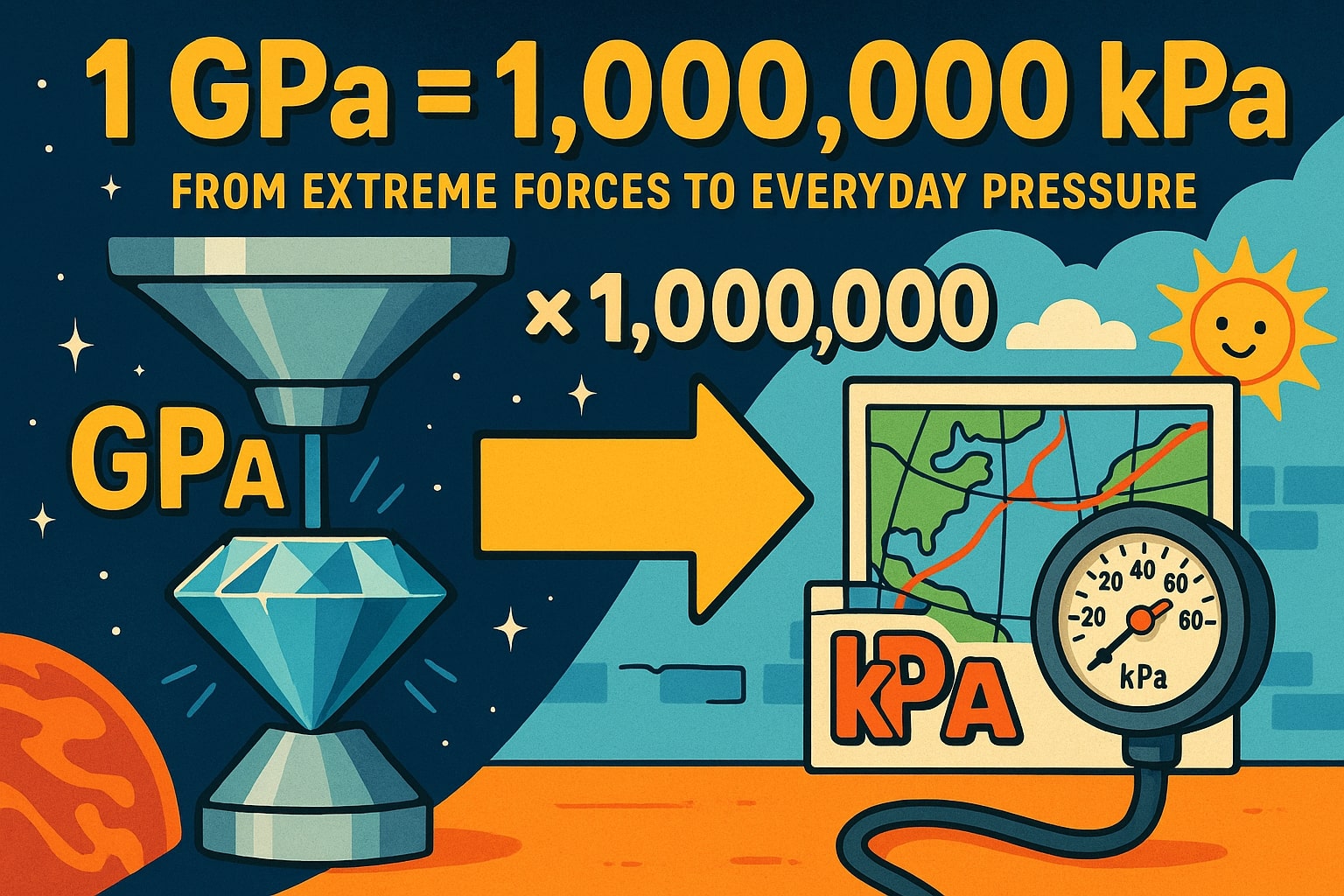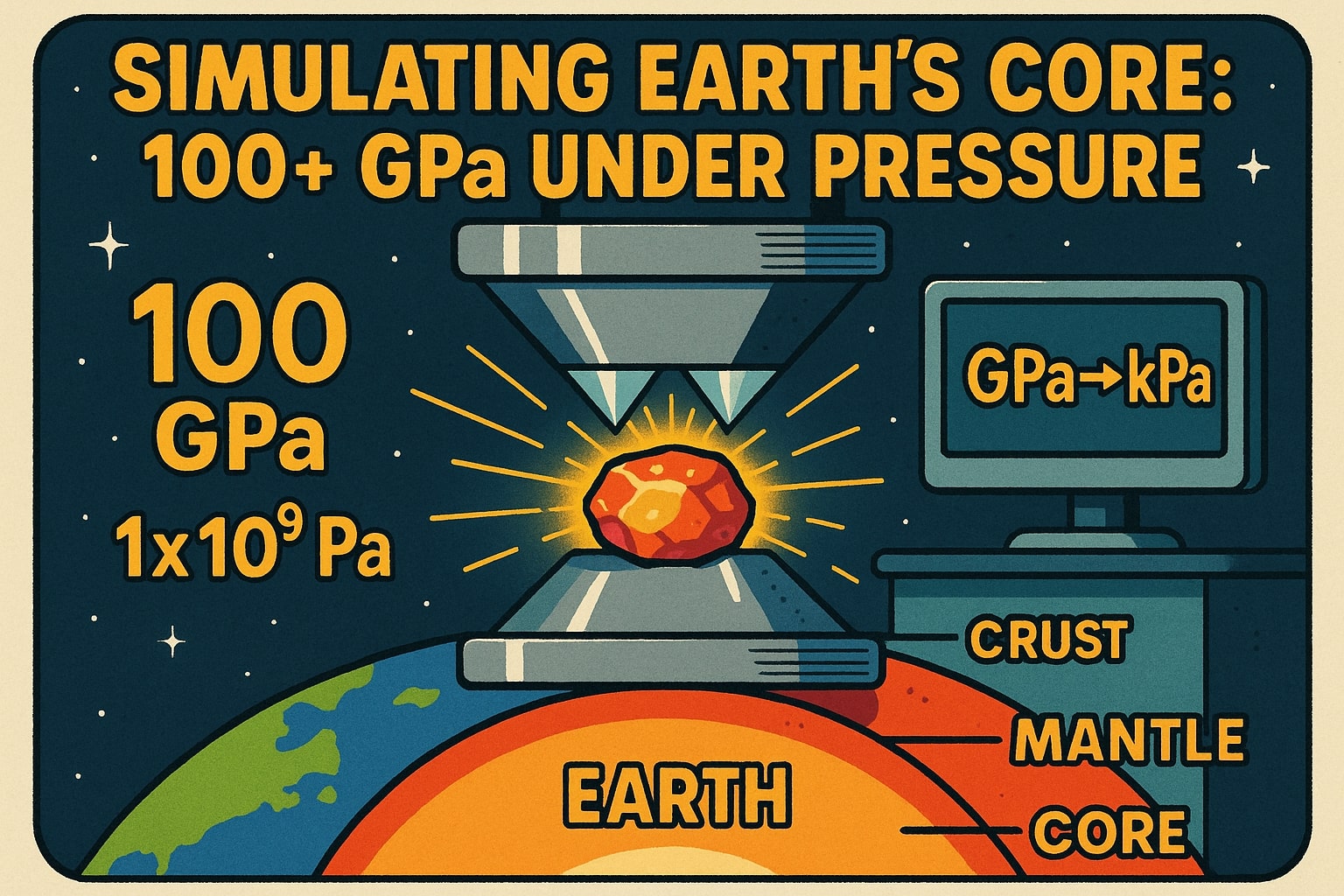Gigapascal to Kilopascal – How to convert GPa to kPa
Need to convert gigapascal to kilopascal? These two pressure units belong to the same SI system, but they sit on opposite ends of the scale. Gigapascals measure extreme pressures used in materials science and geophysics, while kilopascals are more practical for weather, hydraulics, and mechanical systems. Converting between them is straightforward, but understanding where each is applied helps put these massive numbers into context.

What is a gigapascal (GPa)?
A gigapascal equals 1 billion pascals (1 × 10⁹ Pa). This unit is used to measure extremely high pressures, such as:
-
Material strength testing — diamond, graphene, and advanced ceramics are often tested at gigapascal pressures.
-
Geophysics and planetary science — scientists estimate the pressures deep inside Earth’s mantle and core in GPa.
-
Industrial research — superhard materials and synthetic diamonds are manufactured under multi-GPa conditions.
Because of its massive scale, GPa is primarily found in scientific literature and advanced engineering contexts, not everyday measurements.
What is a kilopascal (kPa)?
A kilopascal equals 1,000 pascals (1 × 10³ Pa). It’s widely used in practical settings, including:
-
Weather and atmospheric science, where sea-level pressure is around 101.3 kPa.
-
Tire and fluid pressure, with vehicle manuals and HVAC systems often using kPa.
-
General engineering, where kilopascals serve as a manageable, easy-to-read scale.
While kPa is common for real-world applications, it becomes unwieldy for describing phenomena at gigapascal levels, hence the need for unit scaling.
How to convert gigapascal to kilopascal
Both units derive directly from the pascal, so the math is simple:
1 GPa = 1,000,000 kPa (1 × 10⁶ kPa)
To convert:
Kilopascals (kPa) = Gigapascals (GPa) × 1,000,000
Example: If a diamond anvil cell applies 3.2 GPa of pressure:
3.2 × 1,000,000 = 3,200,000 kPa
For fast, error-free results, use our Pressure Converter or explore other Conversion tools to handle any pressure conversion instantly.
Did you know?
-
Earth’s core pressure: Scientists estimate pressures at Earth’s inner core reach about 360 GPa, or 360 million kPa, based on seismic and experimental data.
-
Material breakthroughs: The world’s hardest known materials, like aggregated diamond nanorods, are synthesized under 20–30 GPa to achieve their extreme strength.
-
Shock physics: During nuclear tests and meteorite impact simulations, peak pressures can exceed 100 GPa, values unimaginable in typical engineering contexts.
-
Steel testing: While typical structural steel yields at around 250 MPa (250,000 kPa), research into next-generation alloys sometimes examines behavior near the GPa range to design ultra-strong materials.
Probing the Depths of Earth with Gigapascals
In 2021, researchers studying Earth’s deep mantle used high-pressure experiments to replicate conditions beyond 100 GPa. According to findings published in Nature Geoscience, they used diamond anvil cells — devices capable of compressing samples to GPa ranges — to simulate the environment thousands of kilometers beneath Earth’s surface.
By converting their results into kilopascals for certain modeling programs and industry reports, scientists could bridge the gap between specialized research and more familiar engineering metrics, ensuring the data was usable across disciplines.

Making Sense of Massive Numbers
Converting gigapascal to kilopascal is straightforward — multiply by 1,000,000. While kPa remains the practical unit for most industries, GPa is critical for scientific research, high-strength materials, and geophysics. Understanding both helps connect laboratory data, industrial specifications, and global-scale studies.
For accurate, quick conversions, use our Pressure Converter or explore other Conversion tools to keep every measurement consistent.

